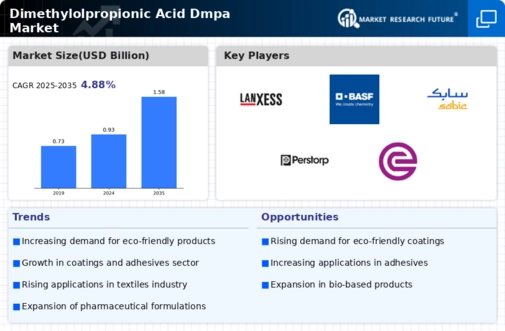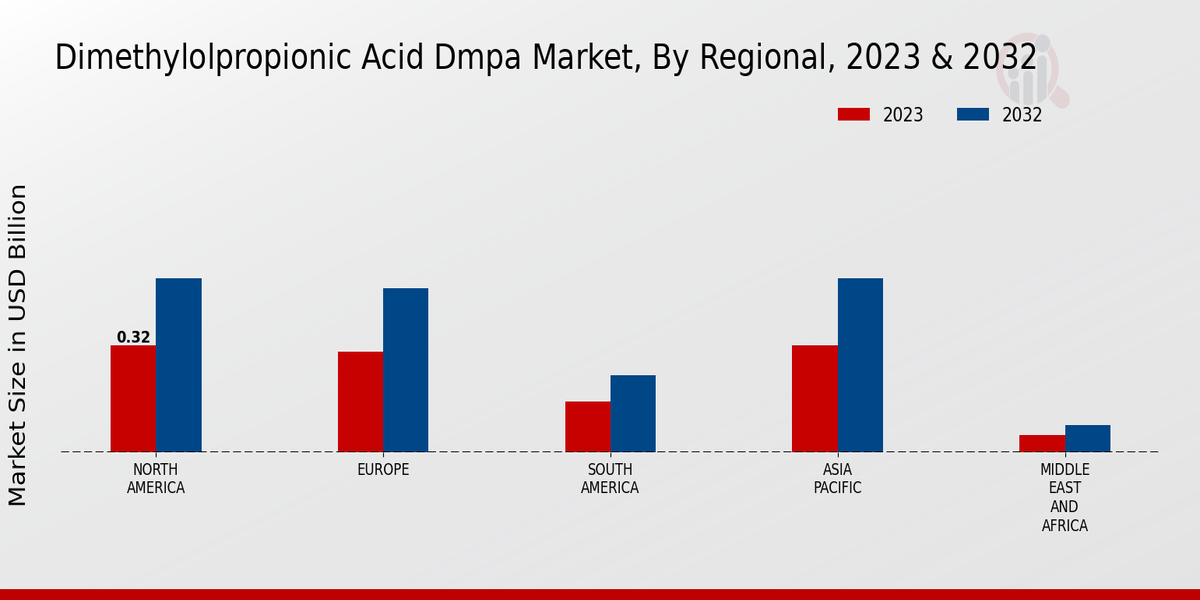Market Growth Projections
Expansion in Textile Applications
The Global Dimethylolpropionic Acid Dmpa Market Industry is witnessing notable expansion in textile applications, particularly in the production of textile coatings and finishes. Dmpa serves as a crosslinking agent, improving the durability and performance of textile products. As the textile industry increasingly emphasizes quality and sustainability, the demand for Dmpa is expected to rise. This shift could contribute to the market's growth, with projections indicating a potential increase to 1.58 USD Billion by 2035. The integration of Dmpa in textile formulations aligns with global trends towards high-performance, environmentally friendly textiles, thereby enhancing the industry's appeal.
Growing Demand in Coatings and Adhesives
The Global Dimethylolpropionic Acid Dmpa Market Industry is experiencing a surge in demand driven by the coatings and adhesives sector. Dmpa is utilized as a key ingredient in the formulation of waterborne coatings, which are increasingly favored for their environmental benefits. The market is projected to reach 0.93 USD Billion in 2024, reflecting a growing preference for sustainable solutions. As regulations tighten around volatile organic compounds, manufacturers are likely to adopt Dmpa-based products, enhancing their market presence. This trend suggests a robust growth trajectory for the industry, as companies innovate to meet consumer expectations for eco-friendly alternatives.
Technological Advancements in Production
The Global Dimethylolpropionic Acid Dmpa Market Industry is benefiting from technological advancements in production processes. Innovations in manufacturing techniques are enhancing the efficiency and cost-effectiveness of Dmpa production. These advancements may lead to improved product quality and reduced environmental impact, making Dmpa more attractive to manufacturers. As production capabilities expand, the market is likely to see increased supply, which could further stimulate demand across various sectors. This trend suggests a positive outlook for the industry, as companies leverage technology to enhance their competitive edge and meet the evolving needs of consumers.
Rising Awareness of Environmental Regulations
The Global Dimethylolpropionic Acid Dmpa Market Industry is significantly influenced by the rising awareness of environmental regulations. Governments worldwide are implementing stricter guidelines regarding chemical emissions and sustainability practices. Dmpa, being a low-VOC alternative, positions itself as a favorable option for manufacturers seeking compliance. This regulatory landscape is likely to drive the adoption of Dmpa in various applications, including coatings and adhesives. As industries adapt to these regulations, the market may experience a compound annual growth rate of 4.96% from 2025 to 2035, reflecting the increasing importance of environmentally responsible products.
Increased Investment in Research and Development
The Global Dimethylolpropionic Acid Dmpa Market Industry is experiencing increased investment in research and development initiatives. Companies are focusing on developing innovative applications for Dmpa, particularly in high-performance coatings and specialty chemicals. This investment is crucial for driving product differentiation and expanding market reach. As R&D efforts yield new formulations and applications, the market is expected to grow, potentially reaching 1.58 USD Billion by 2035. The emphasis on innovation aligns with global trends towards advanced materials, suggesting that the industry is poised for significant advancements in the coming years.







